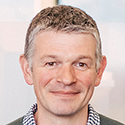Development of 3D Liver Spheroid Cultures and Tools for 3D Culture Metabolic Studies
This webinar is part of the 3D Cell Biology Webinar Series. In this webinar, we will discuss:
- Development and scale up of a 3D liver model culture system
- Use of 3D liver models to research drug-induced liver injury and disease
- How to use metabolism assays with 3D cell culture models
Summary
Do you use 3D cultures for liver research? Are you interested in metabolic analysis of your 3D cell culture systems? In this webinar, Promega’s Dr Hilary Pollard will introduce Promega’s luminescent metabolism assays with focus on three new assays to measure lipid metabolism in monolayer and 3D cell cultures. David Hay, Professor of Tissue Engineering at the University of Edinburgh, will then discuss the creation of a stem-cell derived liver spheroid model and its development for use in high-throughput systems for drug discovery and liver research.
Other Webinars in this Series:
Setting Up Easy-to-Analyze Physiologically Relevant 3D Cultures for in vitro Studies
Speakers

Hilary Pollard, PhD
Product Manager, Cell Based Assays
Promega UK
Dr Hilary Pollard received her D.Phil in Biochemistry from the University of Sussex and followed this with several years of academic research, before changing track to work in the commercial biotech sector. Hilary is currently a Product Manager at Promega UK and manages the cell-based assays portfolio. There is an increasing research focus on metabolic diseases, which brings a need for accurate and sensitive assays to measure all aspects of cell health and metabolism. Hilary works to support customers who wish to investigate cellular metabolism in both 2D and 3D cell cultures.

David Hay, PhD
Chair of Tissue Engineering, MRC Centre for Regenerative Medicine
University of Edinburgh
David is the Professor of Tissue Engineering at the University of Edinburgh. Dave has worked in the field of stem cell biology and differentiation for over fifteen years. He and his team have highlighted the important role that pluripotent stem cells have to play in modelling human liver biology ‘in the dish’ and supporting failing liver function in vivo. The impact of this work has led to a number of peer-reviewed publications (>100), regular appearances at high profile conferences, and three start-up companies.